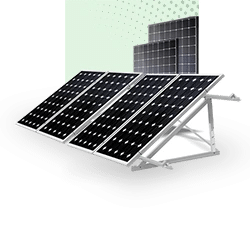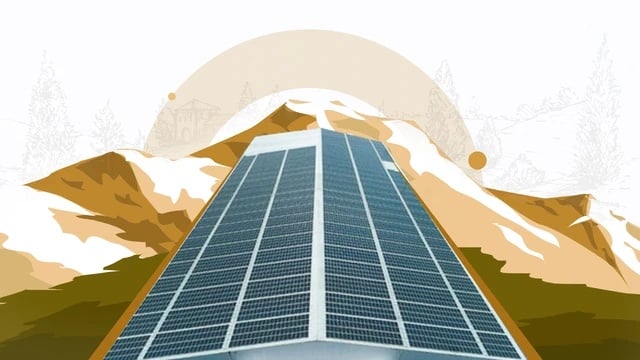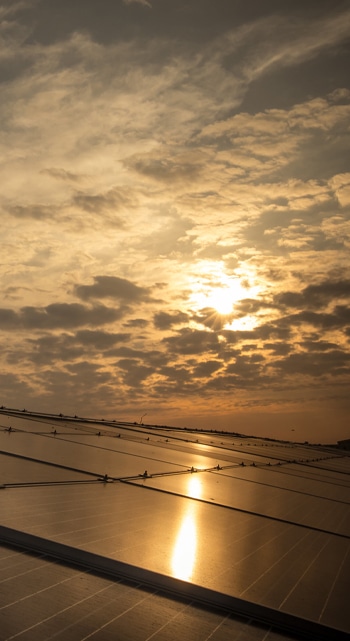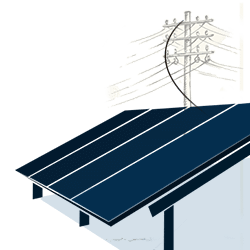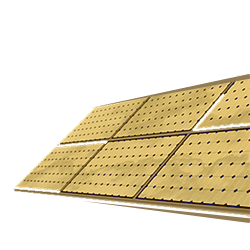In India, most people are accustomed to power cuts. There isn’t any state within the country where people don’t experience power cuts. The situation is worse in rural areas, where several hours of power-cut could also be a daily story. A huge burden on the power girds results in power outages with even the big metropolitan cities facing power cuts, especially during the summer months. Many households in India, recognizing solar power as a reliable and economically viable source of power, have installed solar rooftop systems.
Significant adoption of rooftop solar is often witnessed across India, especially in states like Maharashtra, Tamil Nadu, Karnataka, Rajasthan, and Uttar Pradesh. Improved net metering policies, high grid tariffs, and increased awareness among the consumers are the main reasons for a rise in rooftop solar adoption.
According to the ‘India Residential Energy Survey’, there has been an increase in sales of star-labeled electric appliances that are energy efficient. This shows that folks have already begun to search for options that will help them reduce their electricity bills. A home solar rooftop installation can reduce 80-90% of the electricity bill monthly. A 5kW system can generate around 600 units and save Rs. 4,200 per month.
One of the great benefits of installing solar power plants for homes is that it is cost-effective. The tariff quotes for rooftop solar relative to industrial and commercial tariff rates are 17% and 27% lower, respectively. It is one among the few investments available within the market today that’s relatively risk-free and offers a high return on investment. Compared to other investments like Gold (ROI of 16%), stocks (ROI of 10%), and investment fixed deposit (ROI of 5.8% to 6.7%), solar promises an ROI of 25-30%. Investing in rooftop solar is one of the safest investments because it promises attractive paybacks; with a payback period of 3-5 years.
As we know by now, Solar energy is also green and environmentally sustainable choice. A 5 kW system is like reducing 7.3 plenty of CO2 emissions per annum. Investing in solar creates a positive impact on everyone. Climate change, pollution, natural resources constraints, and positive public sentiment are creating more demand for electricity procured from renewable sources.
In addition to these, seeing the rising demand for home solar plants, the government also offers subsidies to homeowners for installing an on-grid solar system (systems with batteries). In case you own a business then you’ll be eligible for tax credits through accelerated depreciation of up to 40%. This improves the return on investment of solar substantially.
FAQ
Still not sure? Here are some answers to the frequently asked questions.
How to know the solar installation size for my home?
That entirely depends on your energy usage and your geographical location. A 1.5 kW system is currently the “entry point” for grid connect. It will cover between 16 and 25% of the energy consumption of a medium household. A 4-5 kW system will cover 100% of the energy consumption of a medium energy use household. The best way to do it is to call a professional to help you out as there are many aspects and methodologies which need to be taken into account before one arrives at the recommended system size for a particular site. Therefore it is advised to book a site survey with us and let our solar expert inspect your roof to suggest the best possible solution for you.
Can solar be my sole energy source?
Technically speaking, yes, if batteries are used. But practically, if grid power is available, then it is recommended to use solar in combination with the grid. Solar PV can be integrated with your existing power sources (like grid power, inverter, diesel generator, etc.) in such a manner that the first priority is automatically always given to the solar power to be consumed first. However, if you are using Solar PV for nighttime usage or in a remote location, it is quite common to have battery-backed Solar systems.
What is the life and reliability of a Solar PV System?
Solar PV is a highly proven and reliable technology and has been in use since the 1950s. A PV system that is designed, installed, and maintained well will operate for 25 years or even more than 25 years. The Inverters, which are an integral part of a Solar PV system, may need a replacement once in the 25 years lifetime of the system. Moreover, since there are no moving parts (unless you are using tracking devices to move modules tilt with the movement of the Sun), there is practically negligible wear and tear.
How much time does it take to install a solar PV system?
It takes about 2-4 weeks to install a smaller system and about 4-8 weeks for larger systems. However, the actual construction time at the site is much lower since almost half of the time is spent on off-site activities such as design, engineering, procurement, etc. In certain cases, there may be variations to these timelines on account of access to the site, rains, etc.
Does roof orientation really matter?
Most certainly. For example, a system with solar panels facing in a southerly direction will generate far less than one with a northerly aspect. However, east/west installations can be a good option depending on the installation scenario.
If my energy requirements increase, can I upgrade the system?
Yes. You can get additional solar panels at any time to increase generating capability but you might have to upgrade to a larger inverter. Alternatively, you could purchase a larger inverter when installing the system initially and then plan to add some extra solar panels later.
Will my roof be able to bear the weight of a Solar PV system?
A Solar PV system generally weighs 15 to 20 Kg per square meter. This weight can be easily borne by most roofs. Since the life of a Solar PV system is about 25 years or more, do ensure that your roof is in good condition to bear the system’s load over its lifetime.
